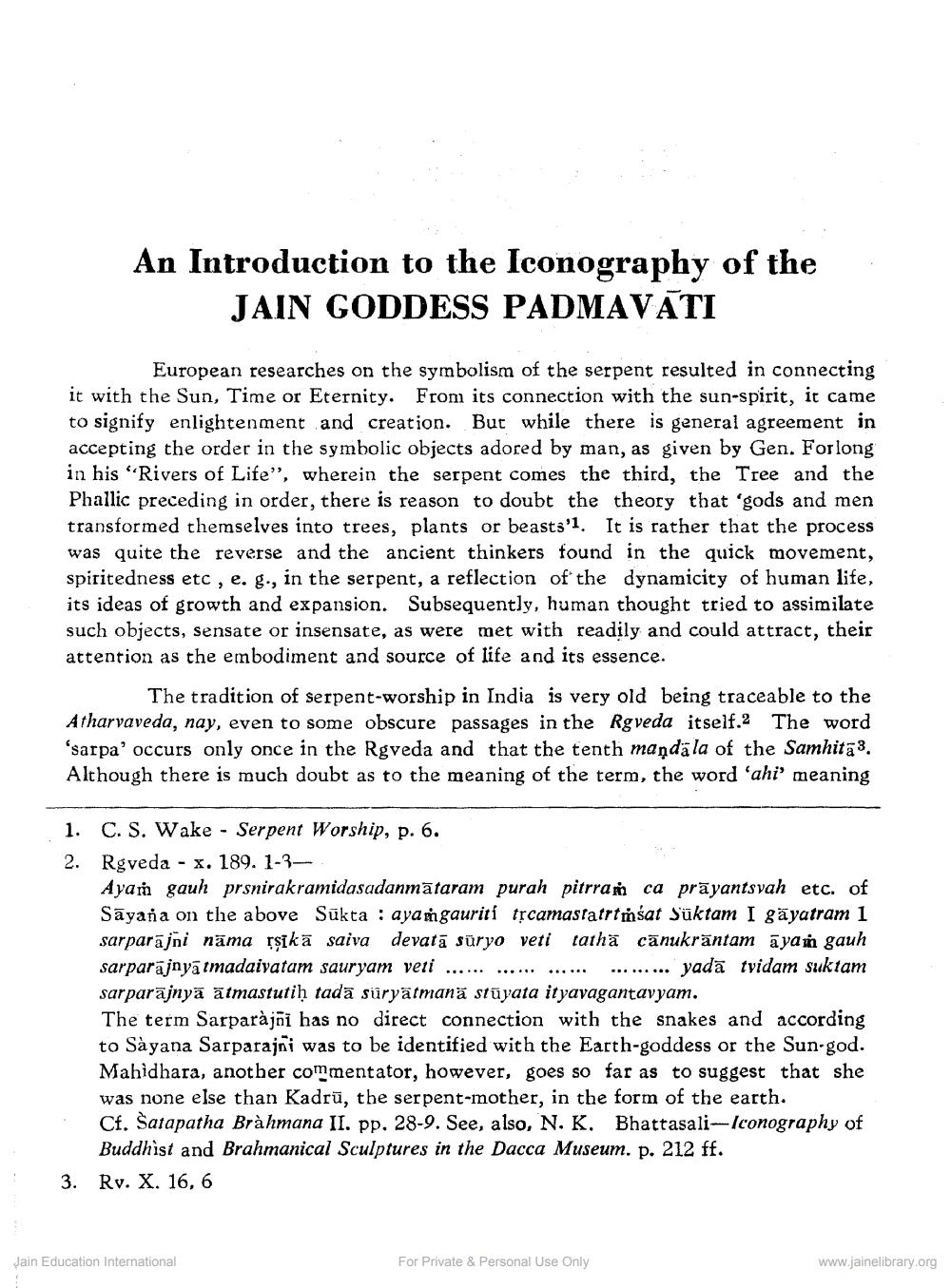________________
An Introduction to the Iconography of the
JAIN GODDESS PADMAVATI
European researches on the symbolism of the serpent resulted in connecting it with the Sun, Time or Eternity. From its connection with the sun-spirit, it came to signify enlightenment and creation. But while there is general agreement in accepting the order in the symbolic objects adored by man, as given by Gen. For long in his "Rivers of Life", wherein the serpent comes the third, the Tree and the Phallic preceding in order, there is reason to doubt the theory that 'gods and men transformed themselves into trees, plants or beast3'l. It is rather that the process was quite the reverse and the ancient thinkers found in the quick movement, spiritedness etc, e. g., in the serpent, a reflection of the dynamicity of human life, its ideas of growth and expansion. Subsequently, human thought tried to assimilate such objects, sensate or insensate, as were met with readily and could attract, their attention as the embodiment and source of life and its essence.
The tradition of serpent-worship in India is very old being traceable to the Atharvaveda, nay, even to some obscure passages in the Rgveda itself. The word 'sarpa' occurs only once in the Rgveda and that the tenth mandala of the Samhita3. Although there is much doubt as to the meaning of the term, the word 'ahi' meaning
1. C. S. Wake - Serpent Worship, p. 6. 2. Rgveda - X. 189. 1-3
Ayam gauh prsnirakramidasadanmātaram purah pitrran ca prāyantsvah etc. of Sāyana on the above Sūkta : ayangauriti trcamastatrtíśat Suktam I gayatram 1 sarparājni näma sșikā saiva devatā sūryo veti tathä сānukrāntam āyan gauh sarparajnyā tmadaivatam sauryam veri .................. ......... yada tvidam suktam sarparājnyā ātmastutiḥ tada süryatmanā stūyata it yavagantavyam. The term Sarparàjni has no direct connection with the snakes and according to Sàyana Sarparajni was to be identified with the Earth-goddess or the Sun.god. Mahidhara, another commentator, however, goes so far as to suggest that she was none else than Kadrū, the serpent-mother, in the form of the earth. Cf. Satapatha Brahmana II. pp. 28-9. See, also, N. K. Bhattasali-Iconography of
Buddhist and Brahmanical Sculptures in the Dacca Museum. p. 212 ff. 3. Rv. X. 16,6
Jain Education International
For Private & Personal Use Only
www.jainelibrary.org




